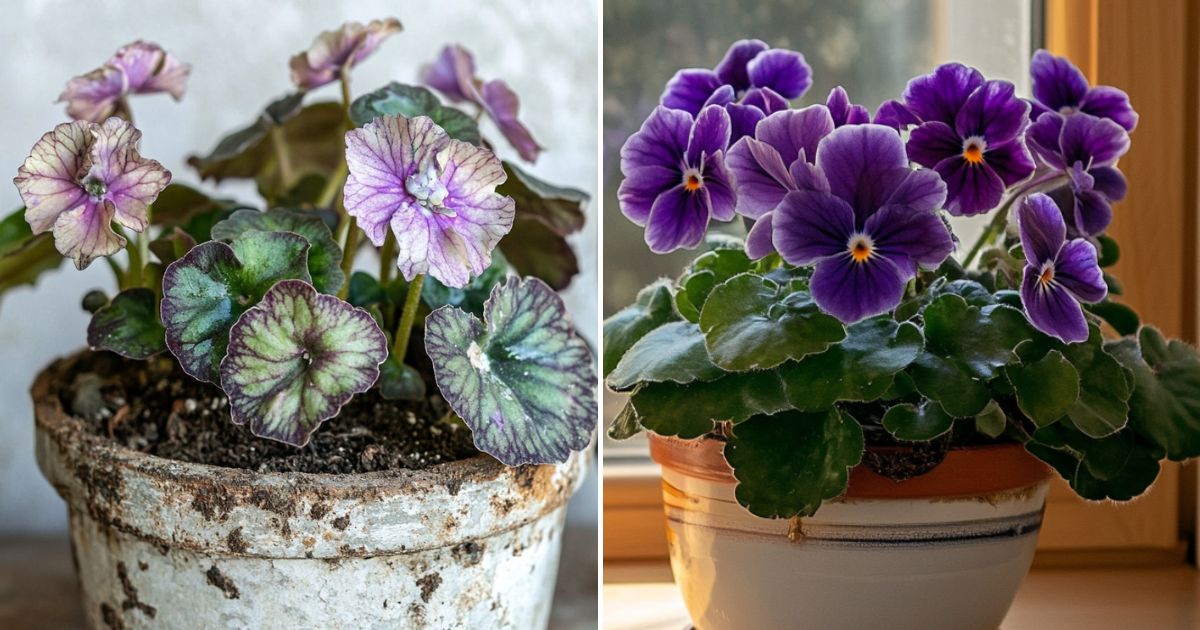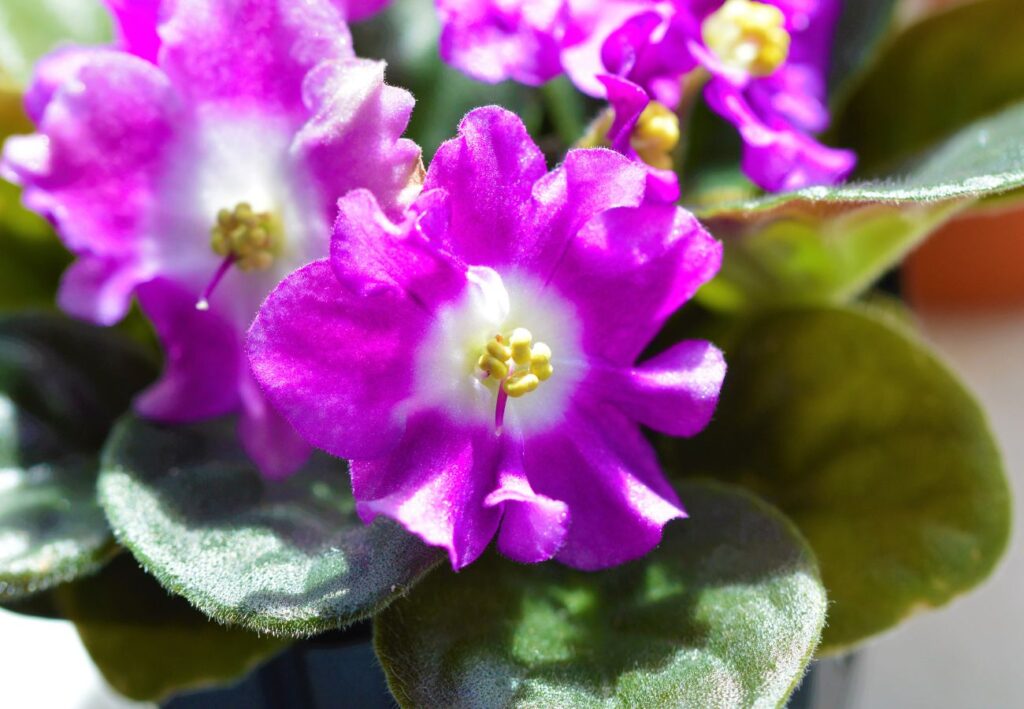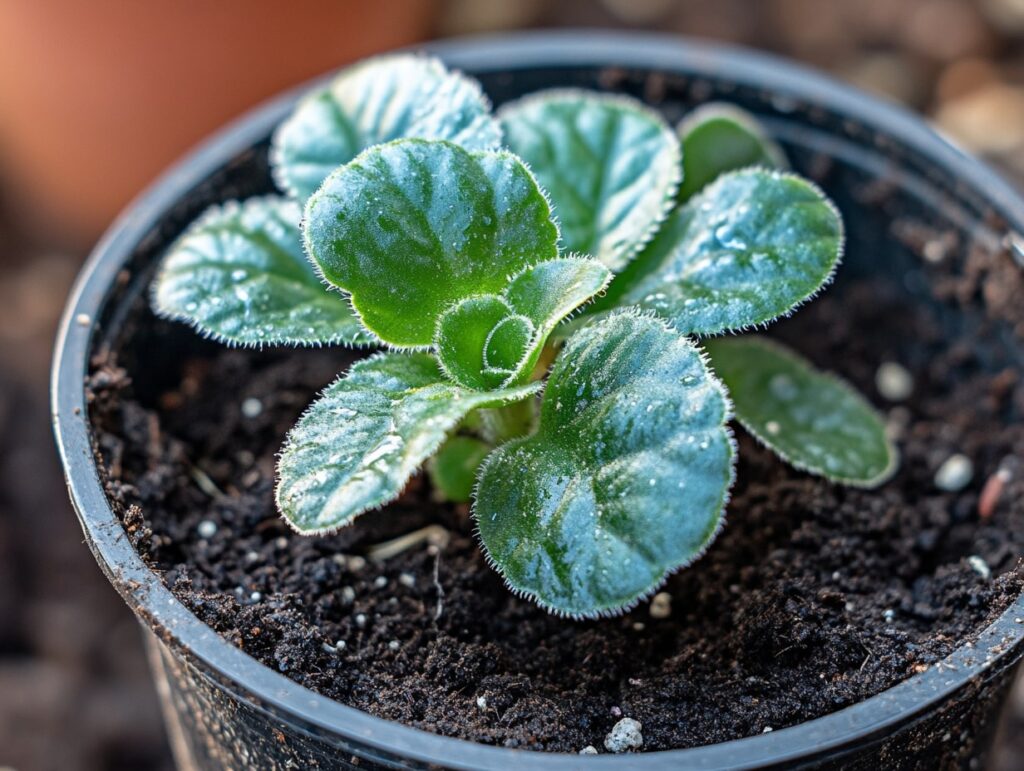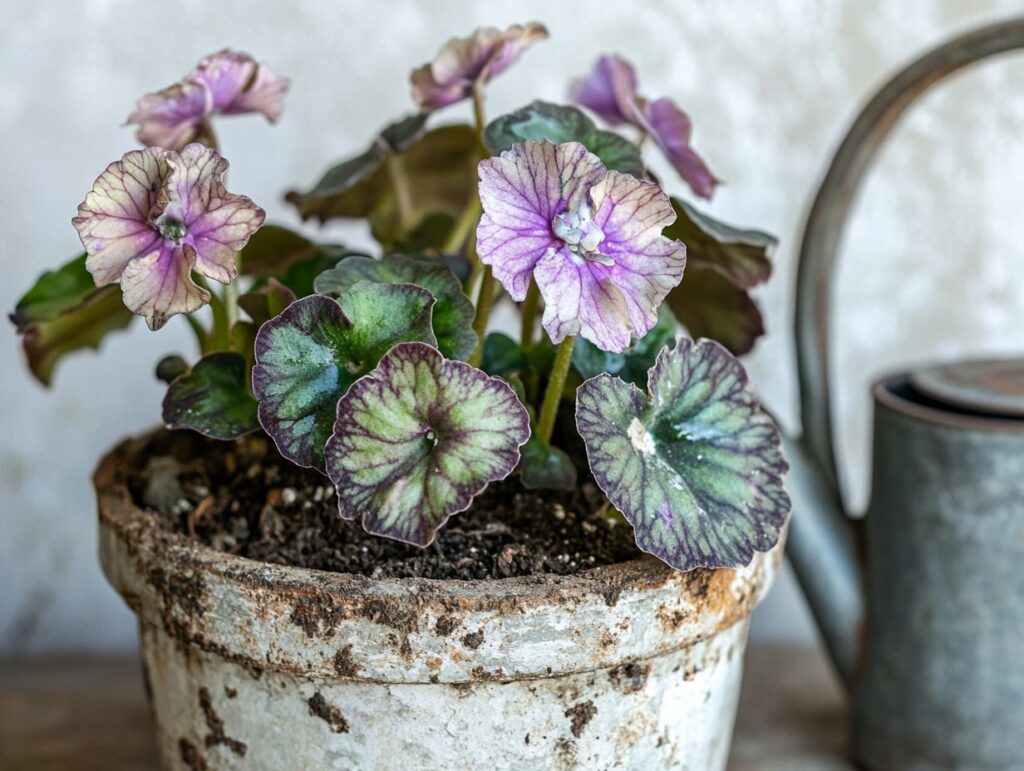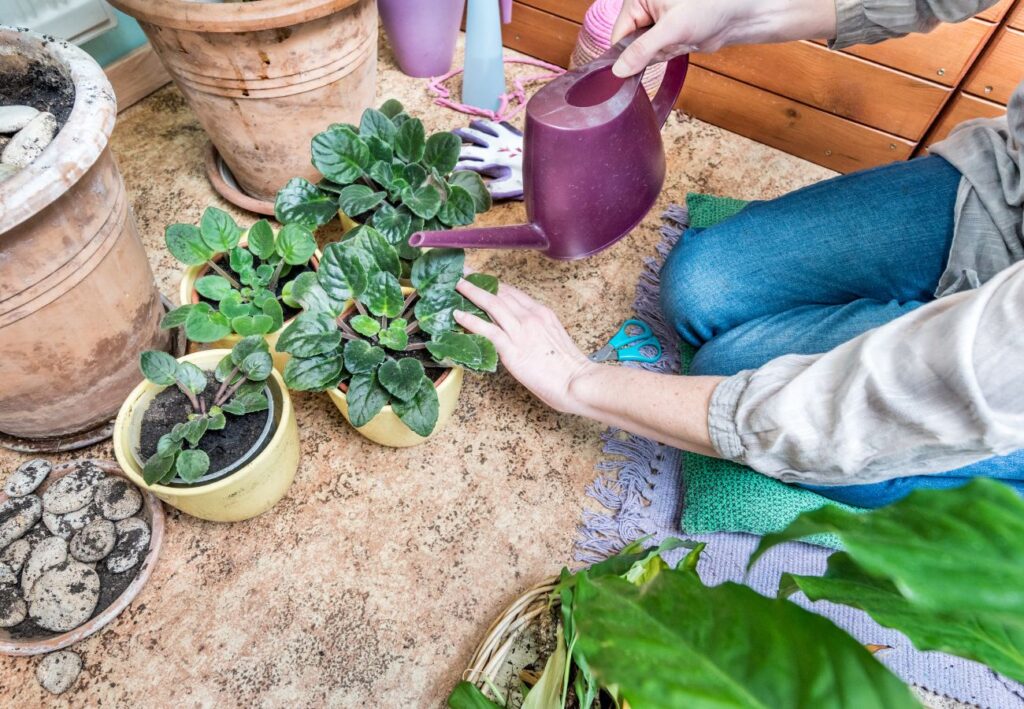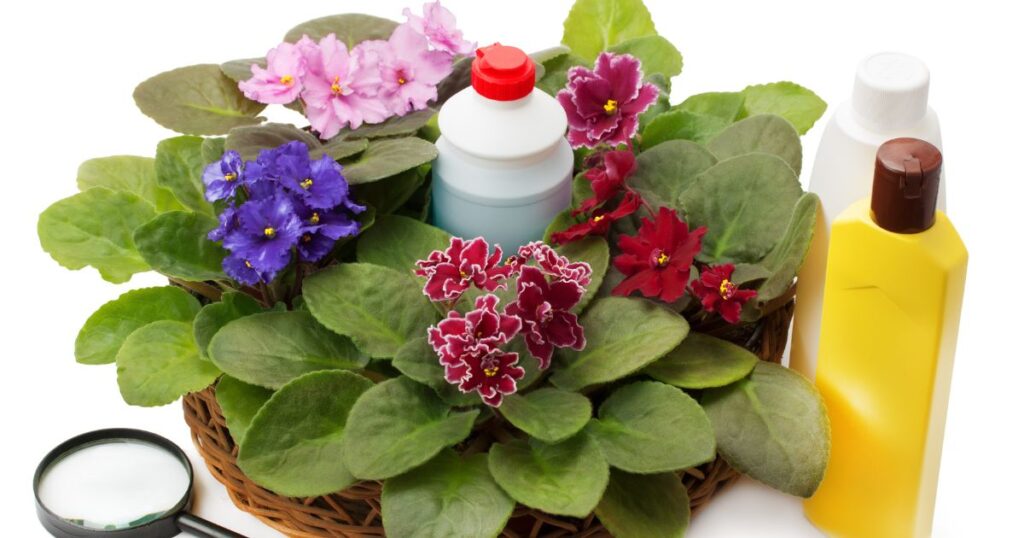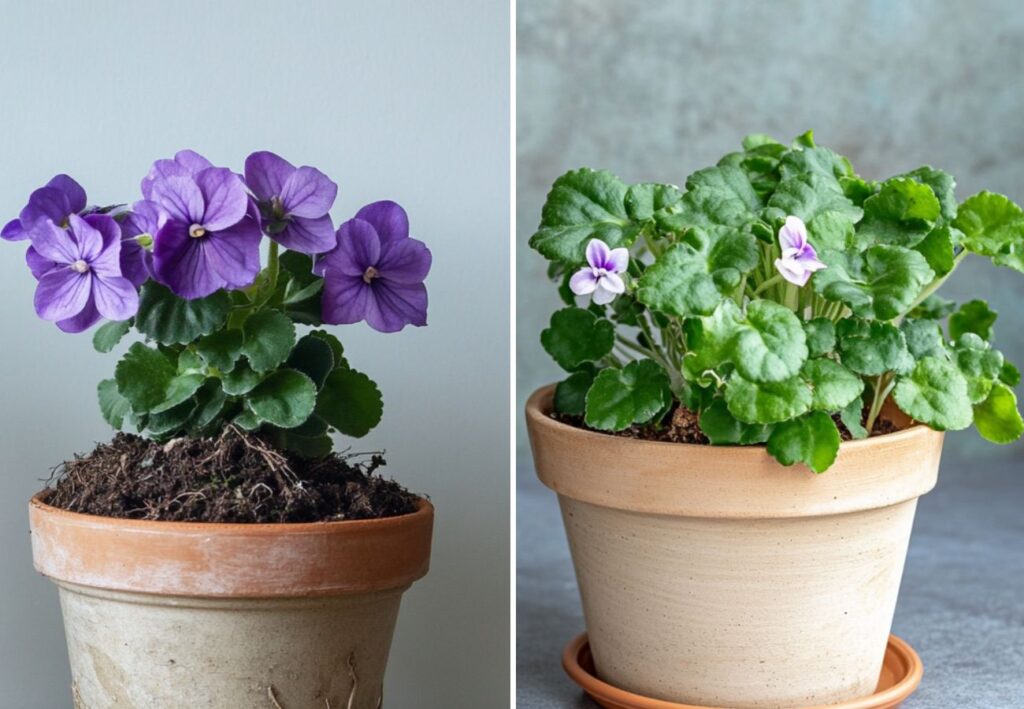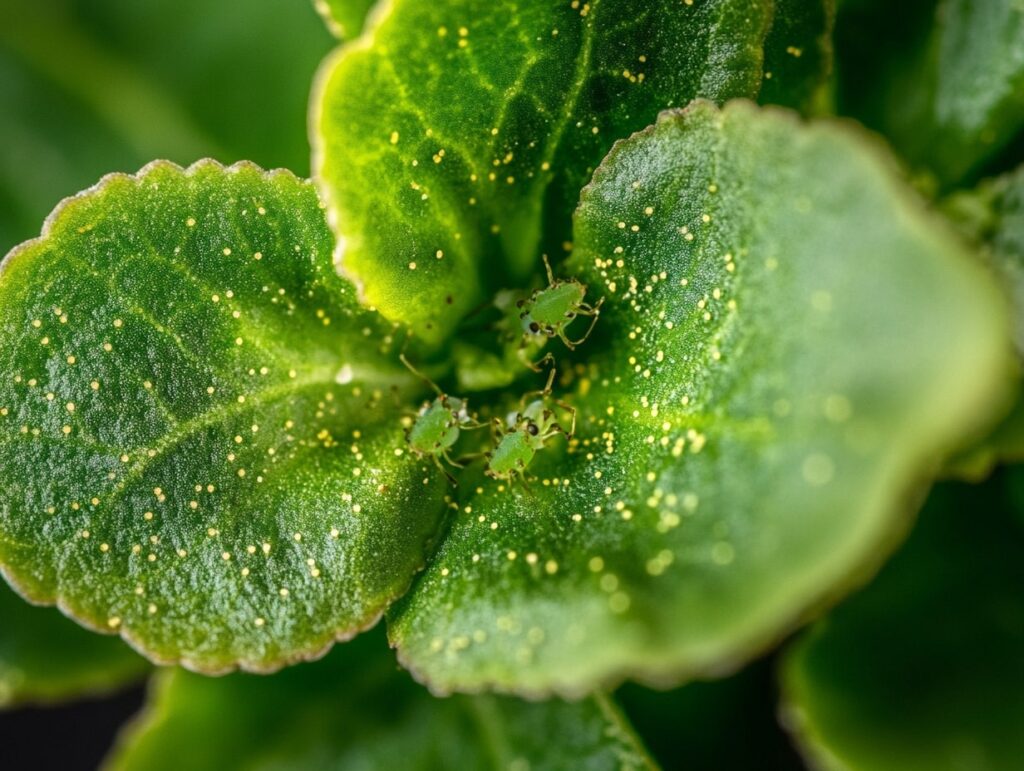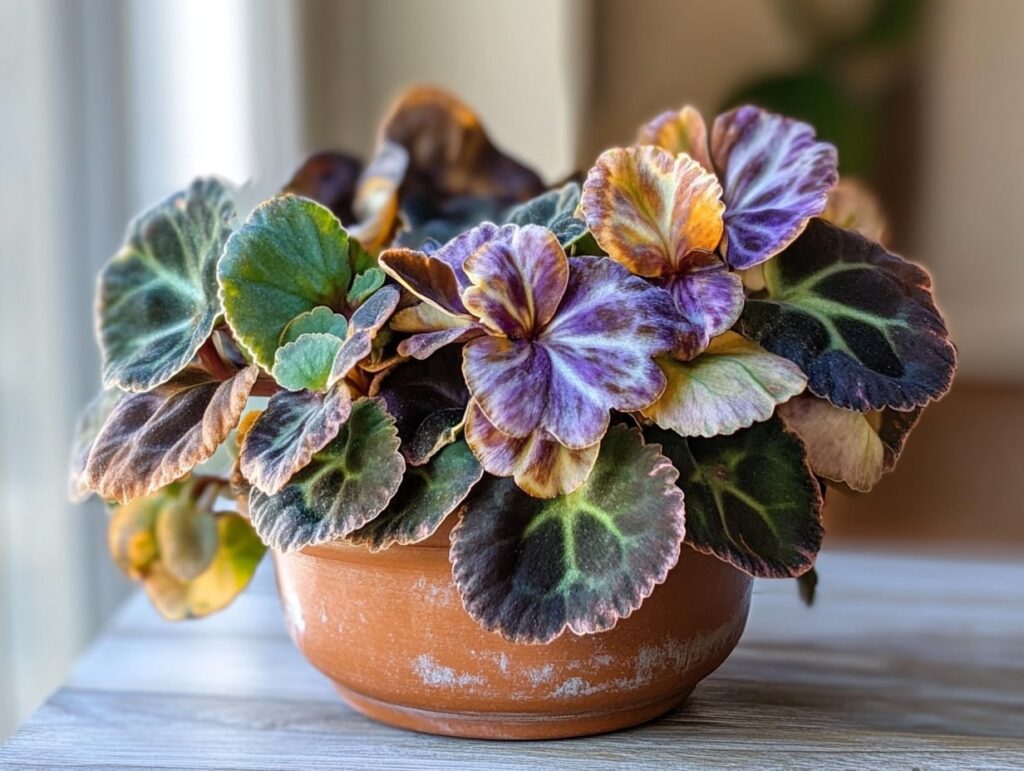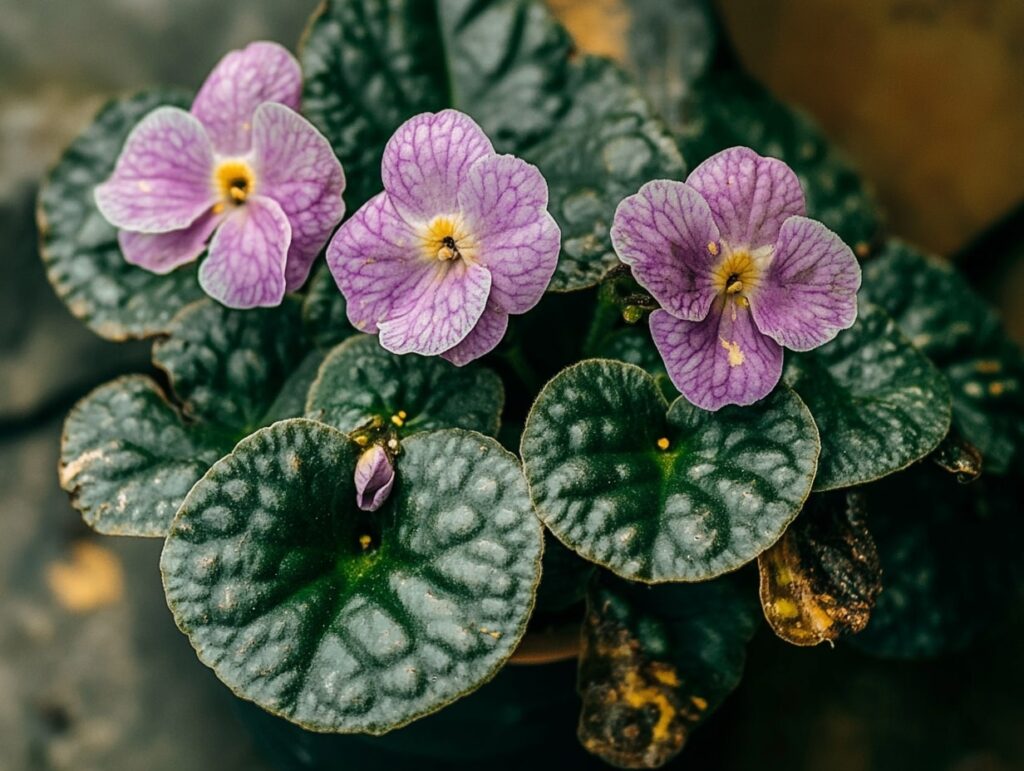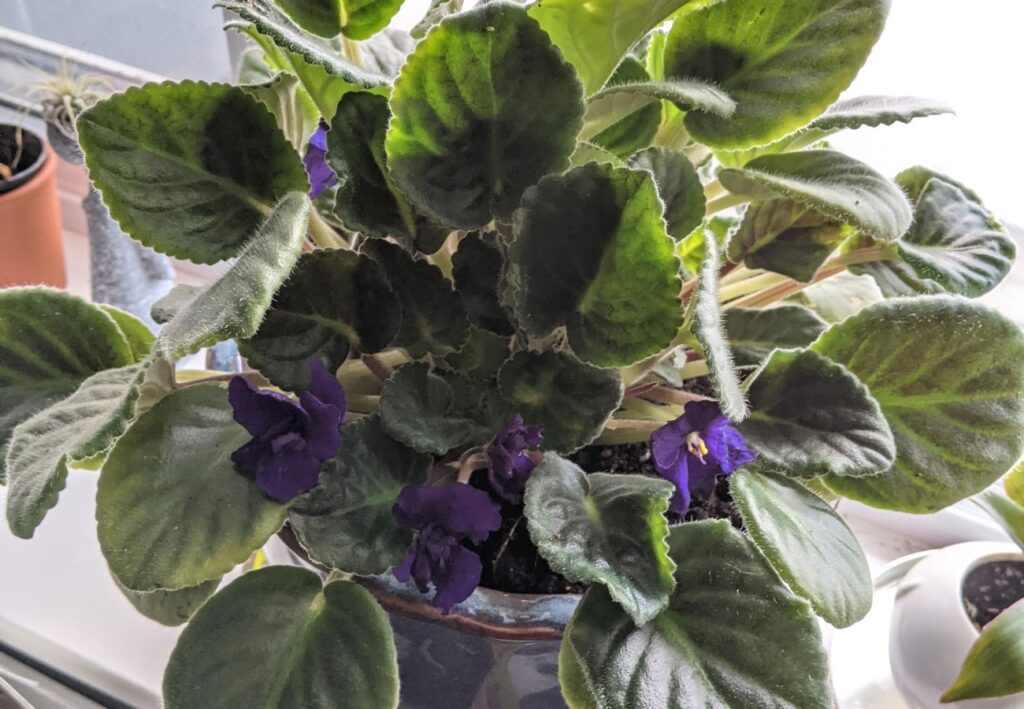African violets, with their vibrant, velvety blooms and attractive foliage, have long been cherished by indoor gardeners around the world. Their relatively small size and diverse color variations make them a perfect fit for windowsills, tabletops, and other cozy indoor spaces.
However, despite their popularity and reputation for being easy to care for, African violets can sometimes be surprisingly finicky.
Even the most well-meaning plant enthusiasts can fall into common pitfalls that hinder these plants’ growth, leading to disappointing results.
Many African violet owners find themselves puzzled when their plants stop blooming, develop yellow leaves, or appear generally unhealthy. The truth is, these delicate beauties have specific needs that, if not met, can lead to a host of problems.
From watering practices to light exposure, every aspect of their care must be carefully managed to ensure they thrive.
In this article, we will explore 15 common mistakes that you might be making with your African violets. By identifying these errors and learning how to correct them, you can cultivate healthy, thriving plants that reward you with their continuous and lush blooms.
Whether you’re a novice or a seasoned gardener, understanding these nuances can make all the difference in your success with African violets.
Let’s dive into these mistakes and discover how to provide the best care for your African violets, so they can flourish and add beauty to your home for years to come.
15 Mistakes You Might Be Making With Your African Violets
1. Overwatering
One of the most common mistakes with African violets is overwatering. These plants prefer their soil to be evenly moist but not soggy. Overwatering can lead to root rot, a condition that can quickly kill your plant.
To avoid this, water your African violets when the top inch of soil feels dry. It’s also important to use well-draining soil and pots with drainage holes to prevent excess water from accumulating.
2. Underwatering
On the flip side, underwatering is just as detrimental. African violets need consistent moisture to thrive, and neglecting to water them regularly can cause the leaves to wilt and the plant to stop flowering.
To avoid underwatering, establish a watering routine and monitor the soil moisture regularly.
3. Using Cold Water
African violets are sensitive to temperature, and using cold water can shock the roots and leaves, leading to damage. Always use room temperature water when watering your plants to avoid this issue.
4. Incorrect Light Conditions
African violets need bright, indirect light to thrive. Placing them in direct sunlight can scorch their leaves, while too little light will prevent them from blooming.
The ideal spot for your African violets is near a north or east-facing window where they can receive plenty of filtered light.
5. Using the Wrong Soil
African violets require a specific type of soil that is light and well-draining. Regular garden soil is too dense and can retain too much moisture, leading to root rot.
Instead, use a soil mix specifically formulated for African violets or create your own mix using equal parts peat moss, perlite, and vermiculite.
6. Ignoring Humidity Needs
African violets thrive in environments with moderate to high humidity. If the air in your home is too dry, especially during winter, your plants may struggle. To increase humidity, you can place a tray of water near your plants or use a humidifier.
Alternatively, grouping plants together can also create a micro-environment with higher humidity.
7. Improper Feeding
African violets require regular feeding to produce their beautiful blooms. However, using the wrong type or amount of fertilizer can cause more harm than good. Use a balanced fertilizer specifically designed for African violets, and follow the recommended dosage.
Over-fertilizing can lead to salt buildup in the soil, which can damage the roots.
8. Not Repotting Regularly
As African violets grow, their roots can become crowded, leading to poor growth and reduced flowering. It’s essential to repot your African violets every 6-12 months to give them room to grow. When repotting, use fresh soil and a slightly larger pot if necessary.
9. Improper Leaf Cleaning
Dust and dirt can accumulate on the leaves of African violets, blocking sunlight and impeding photosynthesis. However, improper cleaning methods can damage the delicate leaves.
To clean your African violets, gently wipe the leaves with a soft, damp cloth or use a soft brush. Avoid using leaf shine products, as they can clog the pores of the leaves.
10. Ignoring Pests
African violets can be susceptible to pests such as aphids, mealybugs, and spider mites. Ignoring these pests can lead to significant damage. Regularly inspect your plants for signs of infestation, such as discolored leaves or webbing.
If you notice any pests, treat them promptly with insecticidal soap or neem oil.
11. Not Removing Dead Leaves and Flowers
Dead leaves and spent flowers not only detract from the appearance of your African violets but can also harbor diseases and pests. Regularly remove any dead or dying foliage to keep your plant healthy and encourage new growth.
12. Wrong Pot Size
Using a pot that is too large for your African violet can lead to overwatering, as the soil will retain moisture for too long. These plants prefer to be slightly root-bound, so choose a pot that is just a bit larger than the root ball.
A pot that is 3-4 inches in diameter is usually ideal for most African violets.
13. Inconsistent Temperature
African violets are sensitive to temperature fluctuations. Exposure to drafts, cold windowsills, or sudden temperature changes can stress the plant and affect its growth.
Keep your African violets in a stable environment where temperatures remain between 65-75°F (18-24°C) to ensure optimal growth.
14. Not Providing Enough Air Circulation
Stagnant air can lead to the development of fungal diseases, which can be detrimental to African violets. Ensure that your plants have adequate air circulation by placing them in a well-ventilated area.
However, avoid placing them directly in front of fans or vents, as this can cause the leaves to dry out.
15. Overcrowding Plants
African violets need space to breathe and grow. Overcrowding them in a single pot or placing them too close together can lead to poor air circulation and increased risk of disease.
Give each plant enough space to grow without touching its neighbors, and avoid planting multiple violets in the same pot unless they are small varieties.
African violets are a rewarding and beautiful addition to any indoor garden, but they do require specific care to thrive.
By avoiding these 15 common mistakes, you can ensure that your African violets remain healthy and vibrant, producing stunning blooms for years to come.
Whether you’re a seasoned gardener or a beginner, taking the time to understand the unique needs of these plants will help you enjoy their beauty and charm to the fullest.
